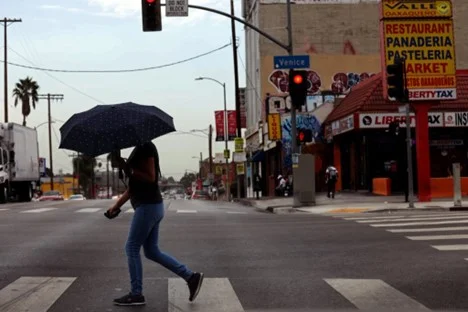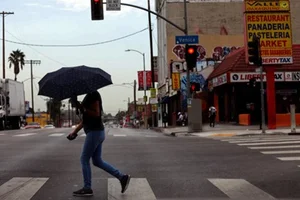
Keeping Our Cool

As temperatures soar, the Chief Sustainability Office has been tasked with putting together a framework for a comprehensive Heat Action Plan for the County.
If this summer’s record temperatures have taught us anything, it’s that hot weather is far more than an inconvenience: It’s a direct threat to our lives and livelihoods. The impacts to our economy are expansive, from business slowdowns to flight delays – but the impacts on health are particularly alarming.
During the most brutal heatwaves, we grapple with deaths among outdoor workers and people getting third-degree burns when their skin touches the ground. Even in less extreme heat, the number of people who end up in hospitals and morgues rises because of heart attacks, injuries, and other conditions triggered by the heat. It’s clear that we need to take action as temperatures continue to rise due to climate change.
For example, LAX historically experiences fewer than 15 days per year of temperatures greater than 90°F. But by the end of the century, the airport is projected to experience up to 90 such days per year, according to a California Energy Commission report. Inland L.A. locations are projected to experience 60–90 additional extremely hot days (greater than or equal to 95°F).
That’s why the County Board of Supervisors recently approved a measure directing the Chief Sustainability Office to report back in 120 days with a framework for a County-specific Heat Action Plan. Collaborating with nine other County units, the CSO report will include a summary of existing heat-related initiatives and gaps that must be closed to ensure the well-being of residents.
Here, CSO policy advisor Ali Frazzini discusses next steps and strategies to be explored.
What does the Board hope to accomplish with this motion?
By directing us to develop a framework for a Heat Action Plan, the Board is making it clear that we can’t pursue just one solution for these diverse and widespread impacts. We need a comprehensive, coordinated approach. The County has already taken some important steps to address heat risks, such as outreach to vulnerable residents during heatwaves and land-use policy on heat-resilient design. Our framework will outline how we can build on these efforts and identify new potential strategies for protecting county residents and assets.
Having that framework in place before the end of this year will position us to start a public planning process next year with strong stakeholder engagement that puts communities and equity at the center. The final Heat Action Plan can serve as a blueprint, complete with priorities for near-term investment and long-term financing strategies, for managing this challenge as it intensifies in the decades to come.
What kind of recommendations or solutions will the blueprint explore to increase resiliency? Is this something on a macro-level? Or more of a neighborhood by neighborhood approach?
We will explore how we can accelerate solutions such as urban greening and shade structures that make outdoor temperatures more bearable; how to make facilities, infrastructure, and natural resources more heat-safe and resilient, from public schools and rental housing to animal shelters, parks, and water treatment plants; and how to change or expand services to help people stay safe while minimizing the disruption heat has on our daily lives, such as adjusting operating hours during extreme heat. The solutions that entail physical changes in public spaces must be tailored to neighborhood conditions and priorities, whereas certain types of changes in policy or practice can be implemented at a regional scale.
What are the biggest challenges to getting this work done? Is it a matter of funding? Getting cross-governmental consensus? What obstacles do we face?
Some solutions really do just need funding. For example, we know there are County parks that need more shade and tree canopy, and it’s just a matter of securing funding to install and maintain those changes. Other potential solutions, such as changes in building code, require some consensus-building. Many solutions need upfront investment but will actually save us money in the long run, through lower utility bills and fewer emergency expenses.
While regional policy gets hashed out, what are some things that the average resident can do to help reduce the burden of extreme heat?
First and most importantly, take care of yourself and your loved ones. Heat impacts, even to our own bodies, can be hardly noticeable and catch us by surprise. Ready LA County outlines some of the things you can do to stay safe and keep your home cool, such as avoiding the sun at certain times of day and putting drapes or shades over your windows.
Second, check on your neighbors – especially older adults and others who may be particularly susceptible to heat-related illness. You can help them stay cool with the same precautions. What’s more, you can help the neighborhood as a whole feel less miserable by putting up shade sails or planting vines to cool important places like sidewalks and south-facing walls. If you own property, you can lower the temperatures of key surfaces – such as your roof and your patio – by covering them in light-colored material or vegetation.